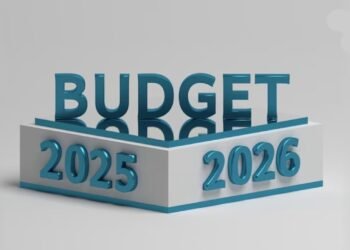The African Development Bank (AfDB) has released its latest economic report which discloses Ghana’s GDP growth for 2022 as 3.6%, 1.8 percentage points below what was secured in 2021 (5.4%).
While the report portrays a positive growth in 2022, it states that Ghana’s GDP is lower than the average for other African countries.
According to the economic report, several countries on the continent saw GDP growth rates above 5%, with some even exceeding 7%. This highlights that there is a difference in growth rate between the economic performance of various nations in Africa. 2022’s top African growth performers were Seychelles (8.3%), Rwanda (6.9%) and Kenya (5.5%).
Before the review and release of AfDB’s report, the International Monetary Fund (IMF) had forecasted that 26 Sub-Saharan African Countries, including Niger, South Sudan and Democratic Republic of Congo will end 2022 with GDP growth rates higher than Ghana.
IMF in its World Economic Outlook anticipated Ghana’s Gross Domestic Product (GDP) growth rate to slow down from 5.36% in 2021 to 3.59% by the end of the year, with a further decline to 2.84% in 2023.
African Development Bank’s Report
After being recognized as a leader in West Africa, Ghana is now struggling to keep pace with its regional neighbours. The country has been facing several economic challenges in recent years including high inflation, a widening budget deficit, and a depreciating currency.
After the presentation of the 2022 Budget by the Finance Minister, Ken Ofori-Atta, Ghana’s macroeconomic environment went under significant pressure to parliament in November 2021. The adverse impact stemming mainly from global shocks and domestic developments made it difficult for the government to call the shots in its own economic space.
The ruining nature brought by COVID-19 pandemic, coupled with the impact of the Russia-Ukraine war on an already fragile global supply chain, commodity prices, global inflation and interest rates as well as the tight financing conditions rendered the assumptions that underpinned the nation’s macroeconomic framework of the 2022 Budget obsolete and irrelevant. Global inflation skyrocketed to a 40-year high, with US inflation scaling up from 5.4% in June 2021 to 9.1% in June 2022.
This was predominantly tackled by the Fed’s decision to introduce monetary policy tightening making it very difficult to tame inflation in both developed and developing countries – and Ghana was not spared.
By the first half of the year 2022, Ghana’s inflation had more than doubled from 13.9% in January to 29.8% in June; the cedi had lost more than 20% of its value to the American ‘green back’ and was tagged as one of the worst performing currencies against the dollar on the global front.
Fiscal Deficit
The nation’s fiscal deficit was 5.7% of GDP for the first half of 2022 compared to the target of 3.9%. Monetary Policy Rate was hiked by 450 basis points between March and May 2022 from 14.5% to 19%, real GDP grew by 3.3% at the end of the first quarter of 2022 compared to 3.6% same period in 2021, and debt to GDP ratio was nearing 80%, attracting more downgrades from international credit ratings agencies such as Fitch, Moody’s and S&P.
The decline in international reserves was the last straw that broke the camel’s back. Gross International Reserves was pegged at US$7.7 billion (3.4 months of import cover at the end of June 2022, compared to US$9.7 billion (4.3 months of import cover at the end of December 2021) putting the cedi in a very forlorn position.
The month of July became a big turning point for the government as it finally ate a humble pie by deciding to seek an IMF bailout package after months of playing hide and seek. The Finance Minister was also in parliament to announce a revision of all macroeconomic targets for the 2022 fiscal year: Overall Real GDP Growth rate of 5.8% was revised down to 3.7%, Non-Oil Real GDP Growth rate of 4.3% down from 5.9%, End-period headline inflation of 28.5%, up from 8%, Overall fiscal deficit of 6.6% of GDP down from 7.4%, Primary surplus of 0.4% of GDP up from a surplus of 0.1% of GDP and, Gross International Reserves sufficient to cover at least three and half months of imports of goods and services.
Ghana’s economy lost its anchor days after these revisions were announced. The country suffered at least seven downgrades and revisions and lost complete access to the Eurobond market. Foreign investors began dumping the country’s long-term sovereign bonds, revenues targets were missed and default was next for both external and domestic creditors.
The IMF cut Ghana’s growth rate for 2022 to 3.6%, from the earlier 5.2%. It, therefore, did not come as a surprise when AfDB disclosed that the West African nation’s economy expanded by 3.6% at the end of 2022, from 5.4% in 2021.
Data put out by the Ghana Statistical Service (GSS) showed the third quarter of 2022 saw the slowest economic growth in Ghana in the past two years, with a growth rate of 2.9%. This was less than the GDP of 4.7% that was registered in the second quarter of 2022. The 0.9% increase in the industry sector had a significant negative influence on the overall growth rate. The largest expansion was reported by agriculture, with 4.6%, while the services sector had a growth of 3.9%.
Despite this slower growth, the country’s economic outlook remains positive, with expectations of a rebound in the coming years, riding on the back of a $3 billion bailout package from the IMF. The government has also implemented various measures to address the imbalances and boost economic growth in 2023, including fiscal consolidation, monetary policy tightening, and structural reforms.
Read More : IEA Urges Government To Moderate Expenditures To Create Fiscal Space For The Economy























